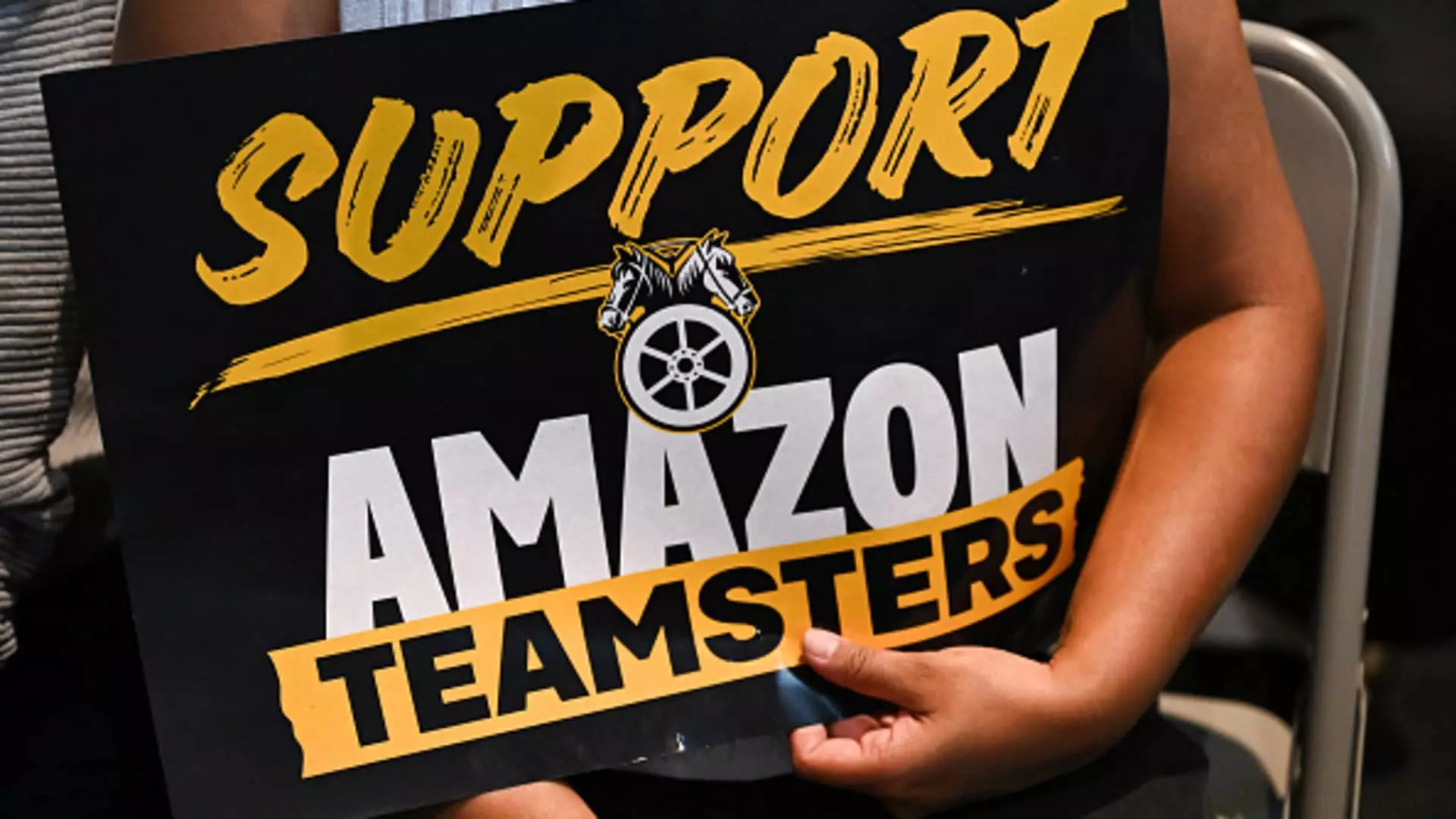In an impressive display of collective action, Amazon delivery drivers at a Queens, New York facility have successfully aligned with the International Brotherhood of Teamsters. This marks a significant turning point in the ongoing labor struggles within Amazon’s logistics network and highlights the rising momentum of unionization efforts among gig economy workers. The development came to light on a recent Monday when the Teamsters announced that drivers from three contracted firms—Cornucopia Logistics, DnA Logistics, and Champion Logistics—have collectively signed authorization cards to pursue union representation.
The drivers who have taken this initiative are not merely seeking representation; they are advocating for substantive changes in their working conditions. Their demands focus on four main issues: consistent work schedules, well-maintained delivery vehicles, manageable workloads, and overall safety in the workplace. These concerns paint a vivid picture of the reality faced by many delivery drivers operating under third-party logistics arrangements. They endure unpredictable hours and inadequate vehicle upkeep, which can lead to unsafe working conditions.
In light of these emerging challenges, Amazon has found itself under increasing scrutiny. Following numerous instances of worker walkouts and demands for increased wages, the company recently announced plans to elevate wages for its contracted delivery drivers as a part of a mammoth $2.1 billion funding initiative aimed at improving labor conditions. This investment underscores a reactionary strategy by Amazon to quell rising discontent among its workforce while simultaneously navigating the complexities of unionization.
Furthermore, the National Labor Relations Board (NLRB) has been actively investigating Amazon’s delivery service partner program. This investigation revealed findings that could compel Amazon to recognize its role as a “joint employer” of delivery drivers at some subcontracted companies, thereby forcing the company to engage in negotiations regarding wages and working conditions. Sean O’Brien, the general president of the Teamsters, expressed optimism about these developments, stating that Amazon has a legal obligation to bargain with its drivers—a statement that highlights the shifting landscape of labor rights within the gig economy.
The success of unionizing efforts in Amazon’s delivery divisions is emblematic of a broader push towards labor organization in the U.S. Despite being the second-largest private employer in the country, Amazon’s history of labor disputes reflects the struggles many workers face within this sector. The Teamsters have also recognized the significance of these developments, launching a dedicated division to assist Amazon employees in their organizing endeavors.
The recent unionization of Amazon delivery drivers in New York represents a crucial moment in the fight for workers’ rights. It signifies not just an isolated victory, but a stirring reminder of the collective power of workers in pursuit of better labor standards. As this movement continues to gain momentum, it may very well pave the way for significant changes in labor relations within the gig economy, raising the stakes for both workers and corporations alike.


Leave a Reply